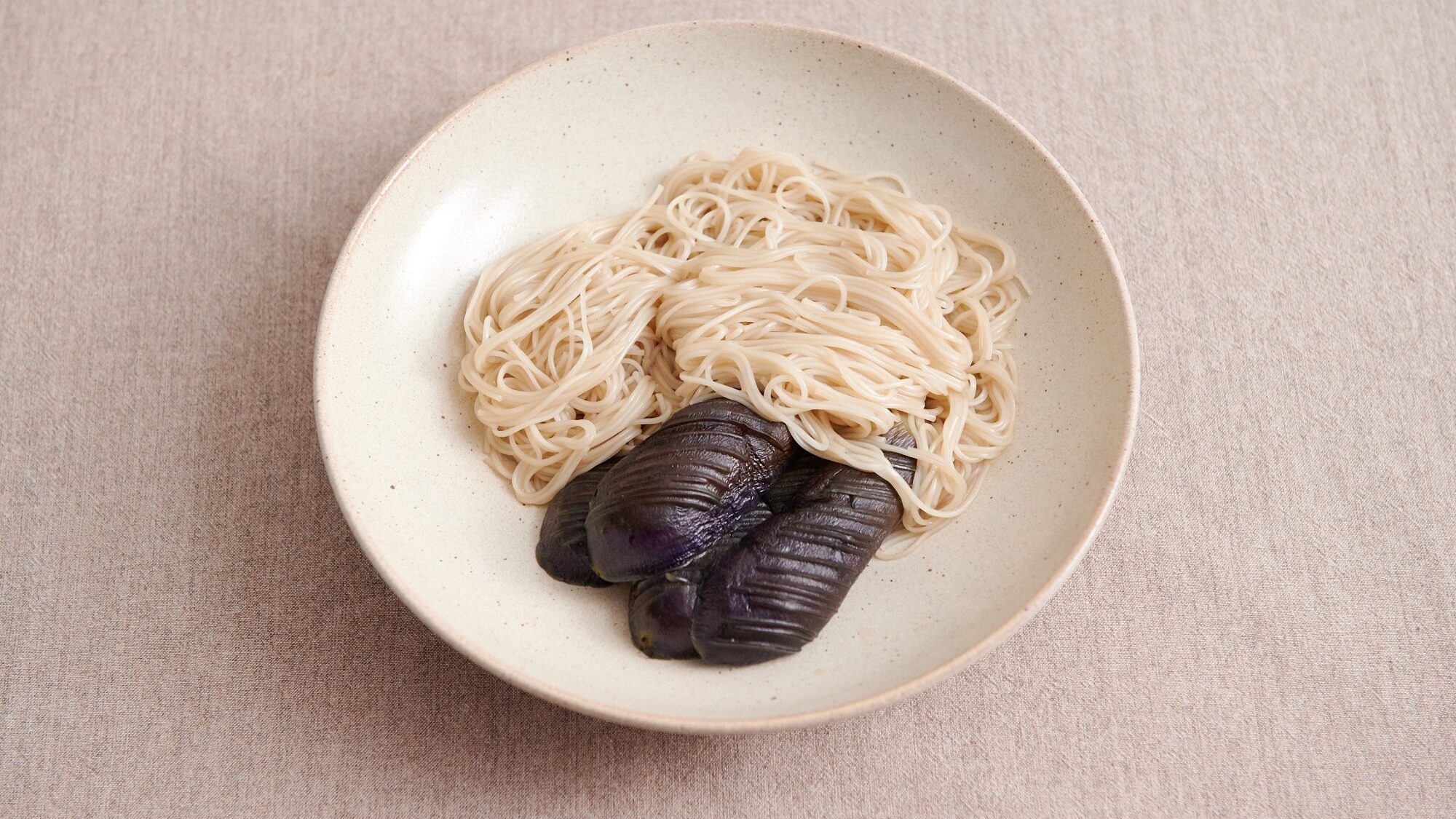
Hey there! Let me introduce you to a comforting dish from Ishikawa Prefecture called Nasu Somen. It’s a simple yet satisfying combination of eggplant and somen noodles, simmered together. What’s interesting is that it feels more like a gently simmered dish than a typical noodle dish. It’s a great way to enjoy somen, especially if you’re looking for something light and flavorful. Let’s check it out!
Dish Name: Nasu Somen
- Region / Location: Around Kanazawa City
- Primary Area of Tradition: Around Kanazawa City
- Main Ingredients: Eggplant, somen noodles
How It’s Eaten / Served
First, eggplants with slits are simmered in dashi broth. Once the eggplants are partially cooked, pre-boiled somen noodles are added, and the mixture is briefly simmered. While it’s commonly seasoned with soy sauce, some families prefer a miso base. There isn’t one fixed recipe, and variations exist, such as cooking the somen noodles from their dried state. It can be enjoyed hot or cold. The texture of the somen changes significantly depending on how long it’s simmered. Cooking somen and eggplant well requires some practice.
Cultural Background and Preservation
Ishikawa Prefecture was once known for its somen production. In Wajima City, a major production center in the Okunoto region, somen making has been rooted since the Muromachi period, predating the renowned Wajima lacquerware. During the Edo period, its reputation grew, and it was exported to various regions. It was used by commoners as a gift for special occasions, and famous brands were even presented to the shogun. However, the industry declined around the beginning of the Showa era, and Wajima lacquerware replaced somen as a famous product. “Omon Somen,” produced in the Omon area of Tonami City, Toyama Prefecture, is said to have been introduced from Noto through traveling medicine vendors in the late Edo period.
The legacy of somen production can be seen in “Nasu Somen,” a local dish eaten in Kanazawa City. Nasu Somen is a dish of eggplant and somen noodles simmered together. The somen is cooked until tender, so it’s eaten more like a simmered dish than a noodle dish.
Nasu Somen is still made today as a casual dish, especially when you need something light during the hot summer months and have a poor appetite. In the past, it was often prepared as part of the Obon (Buddhist festival honoring ancestors) meal. But now, since the ingredients are available year-round, it’s enjoyed throughout the year.
As a local dish of Kanazawa City, Nasu Somen reflects the wisdom of the people who combined eggplant and somen to make leftover somen delicious, eating it as a simmered dish or in a broth. Recently, it’s also increasingly served in restaurants.
It is also called “Nasu no Somen Kabushi,” because the somen and eggplant become flavorful as they cook together and the somen takes on the color of the eggplant and soy sauce.
Using “Heta Murasaki” eggplant, a brand vegetable cultivated in Kanazawa City, adds a unique sweetness and makes it even more delicious.
You can buy it at local supermarkets and delicatessens. It is still eaten daily as a home-cooked meal.
Additional information:
- Somen (そうめん): Very thin, white Japanese wheat noodles.
- Obon (お盆): A Japanese Buddhist festival to honor the spirits of one’s ancestors.
- Heta Murasaki (ヘタ紫): A brand of eggplant cultivated in Kanazawa City.
The information about regional cuisine featured on this website (Piggy's Grandma of Japan) is summarized and adapted from the Ministry of Agriculture, Forestry and Fisheries of Japan (MAFF) website, "Our Regional Cuisines"Additional commentary is provided based on the unique experiences and perspectives of the site's editors.
The copyright for the original content regarding regional cuisine belongs to the Ministry of Agriculture, Forestry and Fisheries of Japan.
The summaries and adaptations published on this site are intended for informational purposes only. Piggy's Grandma of Japan does not guarantee the accuracy or completeness of this information. For the most accurate and complete details, please refer to the original pages on the MAFF website.

